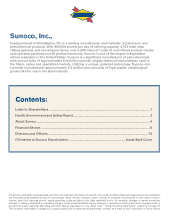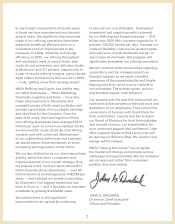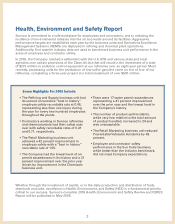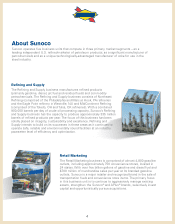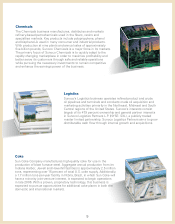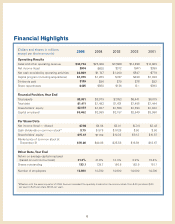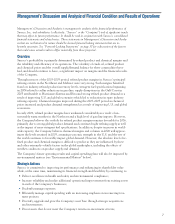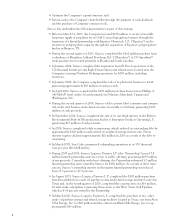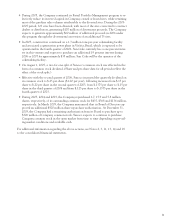Sunoco 2005 Annual Report Download - page 9
Download and view the complete annual report
Please find page 9 of the 2005 Sunoco annual report below. You can navigate through the pages in the report by either clicking on the pages listed below, or by using the keyword search tool below to find specific information within the annual report.
Management’s Discussion and Analysis of Financial Condition and Results of Operations
Management’s Discussion and Analysis is management’s analysis of the financial performance of
Sunoco, Inc. and subsidiaries (collectively, “Sunoco” or the “Company”) and of significant trends
that may affect its future performance. It should be read in conjunction with Sunoco’s consolidated
financial statements and related notes. Those statements in Management’s Discussion and Analy-
sis that are not historical in nature should be deemed forward-looking statements that are in-
herently uncertain. See “Forward-Looking Statements” on page 37 for a discussion of the factors
that could cause actual results to differ materially from those projected.
Overview
Sunoco’s profitability is primarily determined by refined product and chemical margins and
the reliability and efficiency of its operations. The volatility of crude oil, refined product
and chemical prices and the overall supply/demand balance for these commodities have
had, and should continue to have, a significant impact on margins and the financial results
of the Company.
Throughout most of the 2003-2005 period, refined product margins in Sunoco’s principal
refining centers in the Northeast and Midwest were very strong. Such margins benefited
from low industry refined product inventory levels, stringent fuel specifications beginning
in 2004 related to sulfur reductions in gasoline, supply disruptions in the Gulf Coast in
2005 attributable to Hurricanes Katrina and Rita and strong refined product demand as a
result of improving U.S. and global economies which led to reductions in spare industry
refining capacity. Chemical margins improved during the 2003-2005 period as chemical
prices increased and product demand strengthened as a result of improving U.S. and global
economies.
In early 2006, refined product margins have weakened considerably as a result of un-
seasonably warm weather in the Northeast and a high level of gasoline imports. However,
the Company believes the outlook for refined product margins remains favorable for 2006,
primarily due to strong global product demand and continued tight refining supply as well
as the impact of more stringent fuel specifications. In addition, despite increases in world-
wide capacity, the Company believes chemical margins and volumes in 2006 will approx-
imate the levels attained in 2005, assuming economic strength in the U.S. and the rest of
the world continues to favorably impact global demand. However, the absolute level of re-
fined product and chemical margins is difficult to predict as they are influenced by these
and other extremely volatile factors in the global marketplace, including the effects of
weather conditions on product supply and demand.
The Company’s future operating results and capital spending plans will also be impacted by
environmental matters (see “Environmental Matters” below).
Strategic Actions
Sunoco is committed to improving its performance and enhancing its shareholder value
while, at the same time, maintaining its financial strength and flexibility by continuing to:
• Deliver excellence in health and safety and environmental compliance;
• Increase reliability and realize additional operational improvements from existing assets
in each of the Company’s businesses;
• Prudently manage expenses;
• Efficiently manage capital spending with an increasing emphasis on income improve-
ment projects;
• Diversify, upgrade and grow the Company’s asset base through strategic acquisitions
and investments;
• Divest assets that do not meet the Company’s return-on-investment criteria;
7


